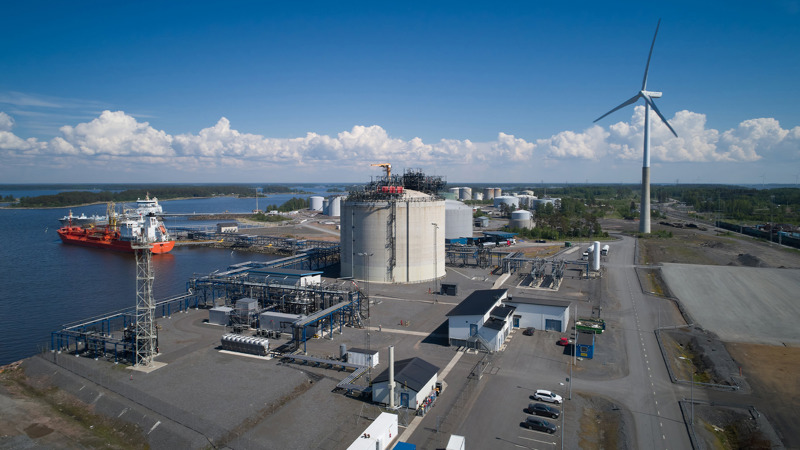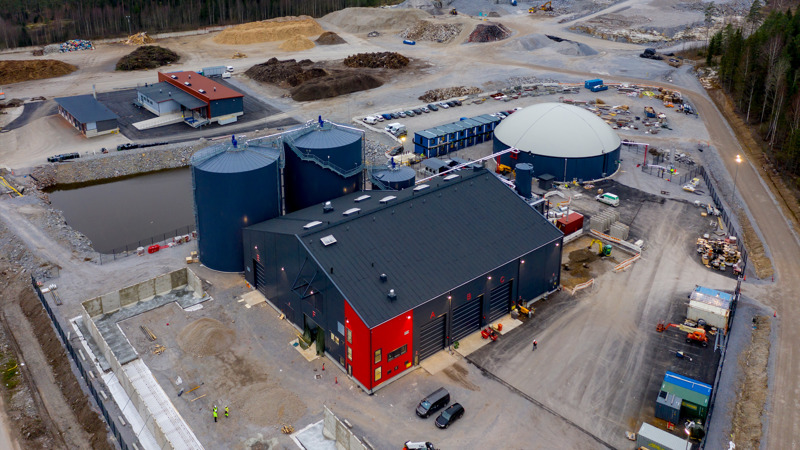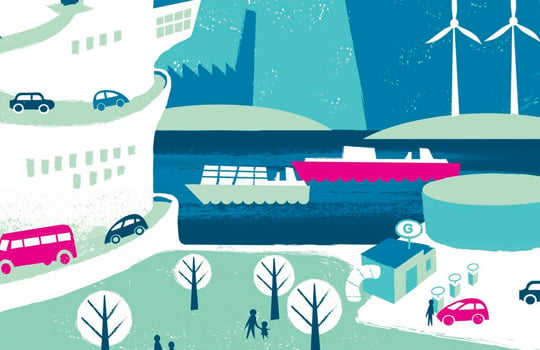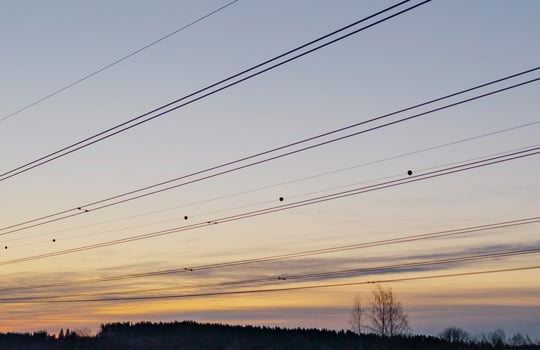Gasum is committed to minimizing methane emissions from its operations
Gasum uses a range of different technologies and methods to detect methane emissions in its operations. Specially designed infrared cameras together with vehicles and drones using laser technology makes detection and quantification of emissions more efficient.
Gasum’s biogas production plants and liquefied natural- and biogas (LNG/LBG) terminals operate with harsh conditions, with both low- and high pressures and temperatures.
In Gasum’s operations, fugitive methane emissions can arise for example through flanges, gaskets and seals. Fugitive emissions are difficult to control because they are usually very small and difficult to measure continuously. Methane has a high global-warming potential (GWP), and it is therefore important to reduce even small emissions as much as possible.
“Our main tool, applied at all our locations, is leak detection and repair. At least twice a year, all potential leak points are inspected using soapy water. If the water starts to bubble, then we have a leak that needs to be corrected. This may sound simple, but it allows us to detect even smaller leaks than when using gas metering equipment”, says Kenneth Olsen, Gasum’s Head of Terminals.

Picture: Gasum LNG-terminal in Pori, Finland
Lasers and infrared photography aid in detection
To complement this clever low-tech method of leak management, a drone hovering in the air above Gasum’s LNG/LBG terminals is a part of developing new detection technology.
“At all our bigger hub terminals, we are quantifying and monitoring our emissions by using MeFTIR, or Mobile extractive FTIR, laser technology. Normally, the equipment is installed on a car, but in autumn 2022 we tried installing it onto a drone to compare the two methods and possibly simplify these measurements in the future”, Olsen continues.
During 2023, Gasum has been photographing the tanks of all its Finnish biogas plants with a special infrared camera (FLIR) that detects possible emissions.
The cameras allow for more accurate and efficient detection of emissions, so that repair works can be started immediately. The area is isolated, and the leak is stopped with clamps. When the leak has stopped, the leak point is temporarily repaired with patching compound. After that, the tank is emptied and fully repaired.

Picture: Gasum biogas plant in Lohja, Finland
The production of biogas reduces agricultural methane emissions
Biogas production is itself a significant way to reduce even large methane emissions, especially in the agricultural sector. For example, the controlled processing of manure in the biogas process reduces methane emissions from traditional manure processing.
The energy contained in the manure and other waste and residue that is used as raw material for biogas is recovered as biomethane, so the energy produced is completely renewable and fossil-free. The production of biogas and the development of biogas process technology have been raised as a key factor in, among other things, the European Union's methane strategy.
"The annual methane emissions generated in Gasum's operations are equivalent to less than half a percent of what all cows in Finland produce in a year. We report our methane emissions annually in our sustainability report. Methane is the second most significant contributor to climate change after carbon dioxide, but it’s also a valuable commodity to Gasum. It is our priority to frequently survey our equipment to detect leaks and improve our measurement methodologies," says Elina Saarivuori, Gasum’s Head of Sustainability.
Biogas is a completely renewable and environmentally friendly fuel that can reduce lifetime greenhouse gas emissions by an average of 90% compared to the use of fossil fuel. The reduction in NOx emissions is up to 95%, and in particle emissions up to 99% compared to heavy fuel oil. Biogas can be used as fuel in all the same applications as natural gas.
"In the future, we will move even more towards completely renewable gas and electricity. Biogas is a central part of this package. We are increasing investments in our own biogas production and procure biogas from reliable partners. Our goal is to bring seven terawatt hours (TWh) of renewable gas yearly to the market by 2027 and achieving this goal corresponds to a cumulative carbon dioxide saving of 1.8 million tons for our customers," Saarivuori concludes.



